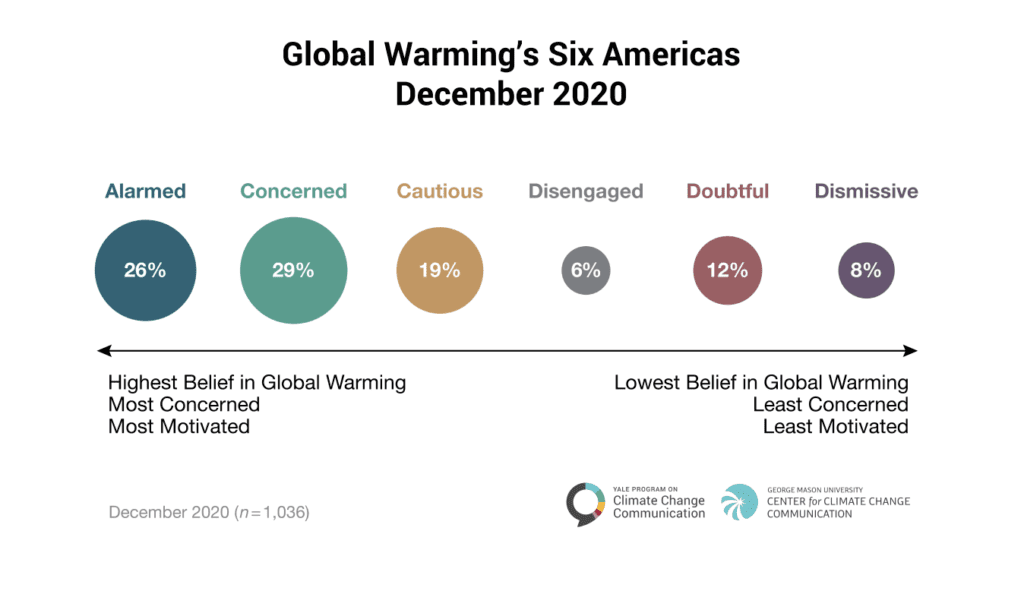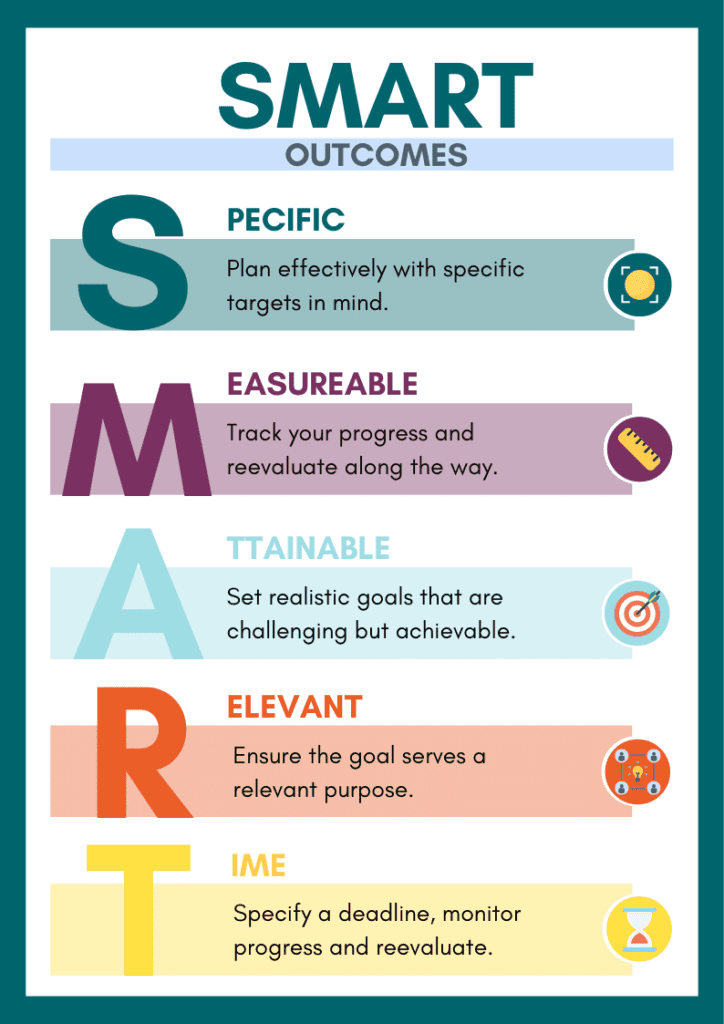Does your community have a climate and sustainability communications plan? Communities working on climate and sustainability communications need to 1) identify communication goals, 2) identify audiences, 3) select communications channels, 4) measure success, and 5) use storytelling.
Remember to keep your community’s overall goal in mind whenever creating a communications plan and content!
Identifying Your Communication Goals
For effective and engaging sustainability and climate communications, communities must clearly outline their communication goals. Furthermore, it is crucial for communities to know the different goals associated with science communications vs. climate and sustainability communications.
Science communication has broader goals in mind: awareness, enjoyment, interest, opinion, and understanding. On the other side of the coin, climate and sustainability communication goals focus on increasing awareness, understanding, persuading, caring, and acting.
Science communication broadly provides information about science topics in a user-friendly and engaging manner to reduce the gatekeeping and bridge communication gaps between the public, scientists, and policymakers. Climate and sustainability communication focus on increasing awareness, understanding, and mobilizing to address the climate crisis and sustainability initiatives.
Science communication goals focus on communicating science in an accessible, engaging, and transparent format. In contrast, climate and sustainability communications goals focus on educating, informing, warning, persuading, mobilizing, solving climate change, and implementing sustainability initiatives. By defining your community’s goals, you can identify the best audience, content, channel, and metrics to craft engaging communications.
Identify Your Audience
After defining climate and sustainability communication goals, a community needs to identify the ideal audience to achieve the desired outcome. You can define an audience by location, direct vs. indirect communication, and level of engagement.
- Location: Consider defining your audience based on location and crafting messages based on place-based values, such as geographical features or quality of life.
- Indirect v.s direct: Consider defining your audience based on if you will have indirect or direct communications with them. For example, you may need to indirectly reach an audience through another stakeholder, such as an association.
- Levels of engagement: Consider defining your audience based on the level of engagement with climate and sustainability initiatives. The Global Warming’s Six Americas analysis defines the U.S. public into six audiences, who respond differently to global warming issues: alarmed, concerned, cautious, disengaged, doubtful, or dismissive.

When defining an audience, a community must consider accessibility and language to ensure accessibility and transparency. To increase the reach and impact of communication campaigns, a community needs to make all content accessible for varied abilities (e.g., follow A.D.A. guidelines and use color-blind friendly palettes), languages, and educational levels. For example, best communication practices suggest writing at an eighth-grade level and using active voice to increase understanding and engagement with content.
Select Communication Channels
There are a variety of channels available to increase awareness and engagement with climate and sustainability communications. Selecting the best platform for sharing content depends on your community’s goals and audience type. Depending on the demographic of your desired audience, some platforms and deliverables may perform better than others. For example, Instagram is ideal for passive engagement goals, highly visual content, and audience ages of 18-34.
Communities should use current channels available and test-out varied content to see which platform is best for their audiences. Remember, the best communication plan is flexible and adapted to meet audiences where they are.

Measuring Communications Success
After identifying an audience, communities need to determine the desired outcome from a specific audience. Ideally, communities will have specific, measurable, attainable, relevant, and time-based (S.M.A.R.T.) outcomes. In addition, S.M.A.R.T. outcomes allow communities to track communications metrics and monitor progress.
The Art of Climate and Sustainability Storytelling
At its core, climate and sustainability communications are really storytelling. Stories are more accessible for readers to remember than straight scientific facts. Immersing an audience in a story will increase interest and follow through with the desired outcome or call to action.
In general, climate and sustainability storytelling should:
- Use local values (health, security, quality of life, landscape) instead of moral values
- Bring forward the right messengers
- Amplify the mission to protect and serve
- Highlight local science, such as general climate trends and community’s vulnerabilities
- Message with hope and benefits of climate solutions
- Include data visualization instead of technical graphs and jargon
Are you interested in learning more?
Become an ICLEI USA member today and join us for our workshop on March 10th from 12 pm – 1:30 EST. We will walk through specific climate and sustainability communications examples and apply best practices to your community’s needs!
Workshop Details
ICLEI USA members are invited to join a free, interactive 90-minute workshop to learn how to craft engaging climate and sustainability communications. Participants will get hands-on experience diving into their community’s sustainability and climate communication goals and using innovative and cutting-edge messaging and delivery methods. ICLEI USA offers the Climate & Sustainability Communications Workshop to our members quarterly; March 10th, June 8th, September 8th, and November 10th.
Learning outcomes:
- Outline your climate and sustainability communication goals
- Define your audience
- Learn how to Measure your communication success
- Use climate and sustainability storytelling to achieve your goals
- Discover delivery methods and practices to engage your audience
For this interactive workshop, we ask participants to come prepared to discuss the following:
- What are your communication goals regarding your community’s climate and sustainability initiatives?
- How would you describe your intended audience?
- How would you define success for one of your goals?
- What is your current climate and sustainability story?
- How would you add local value to your climate and sustainability storytelling?
- Who are the best messengers for your community?
- What tools do you need to be successful?

